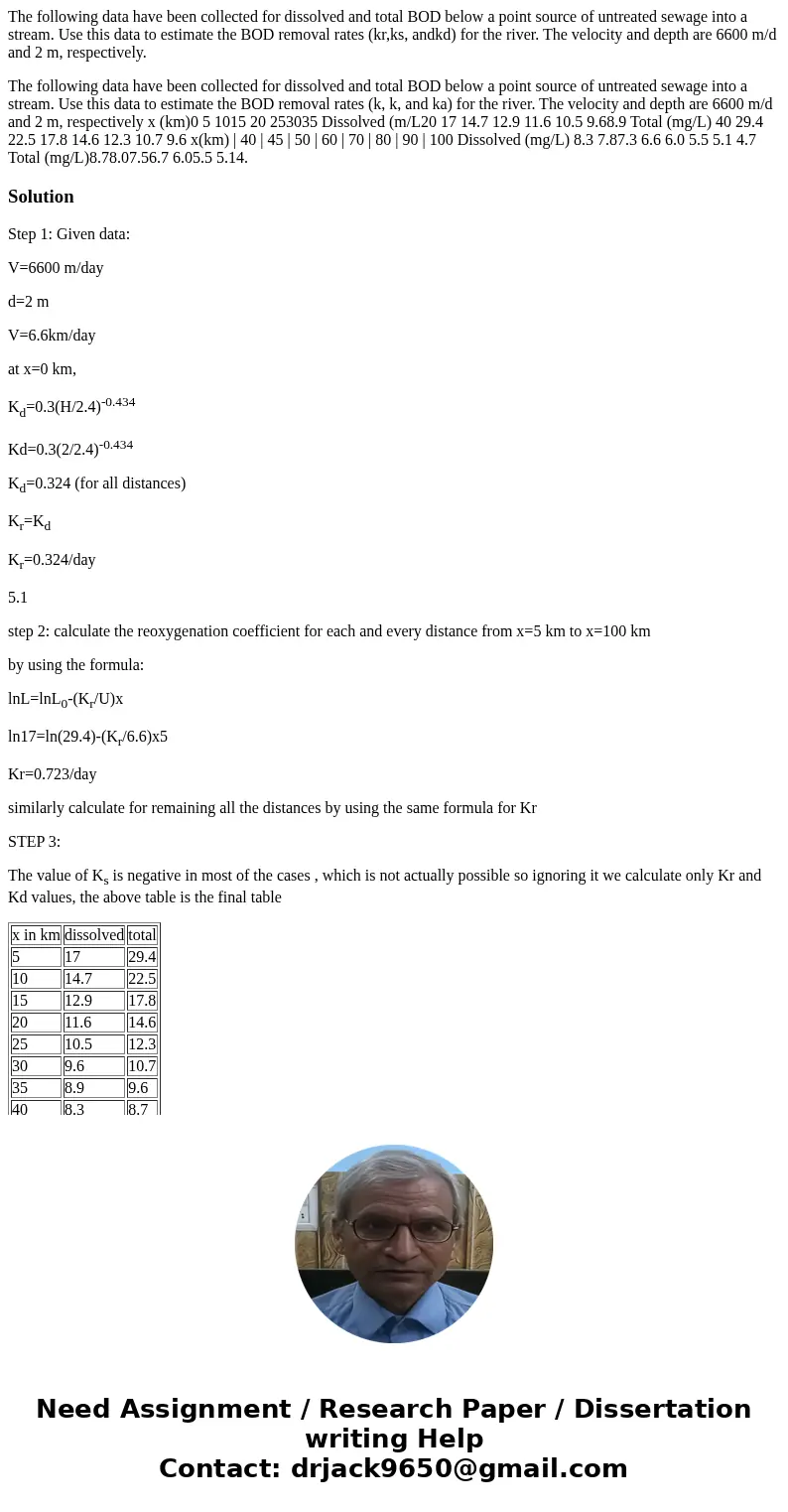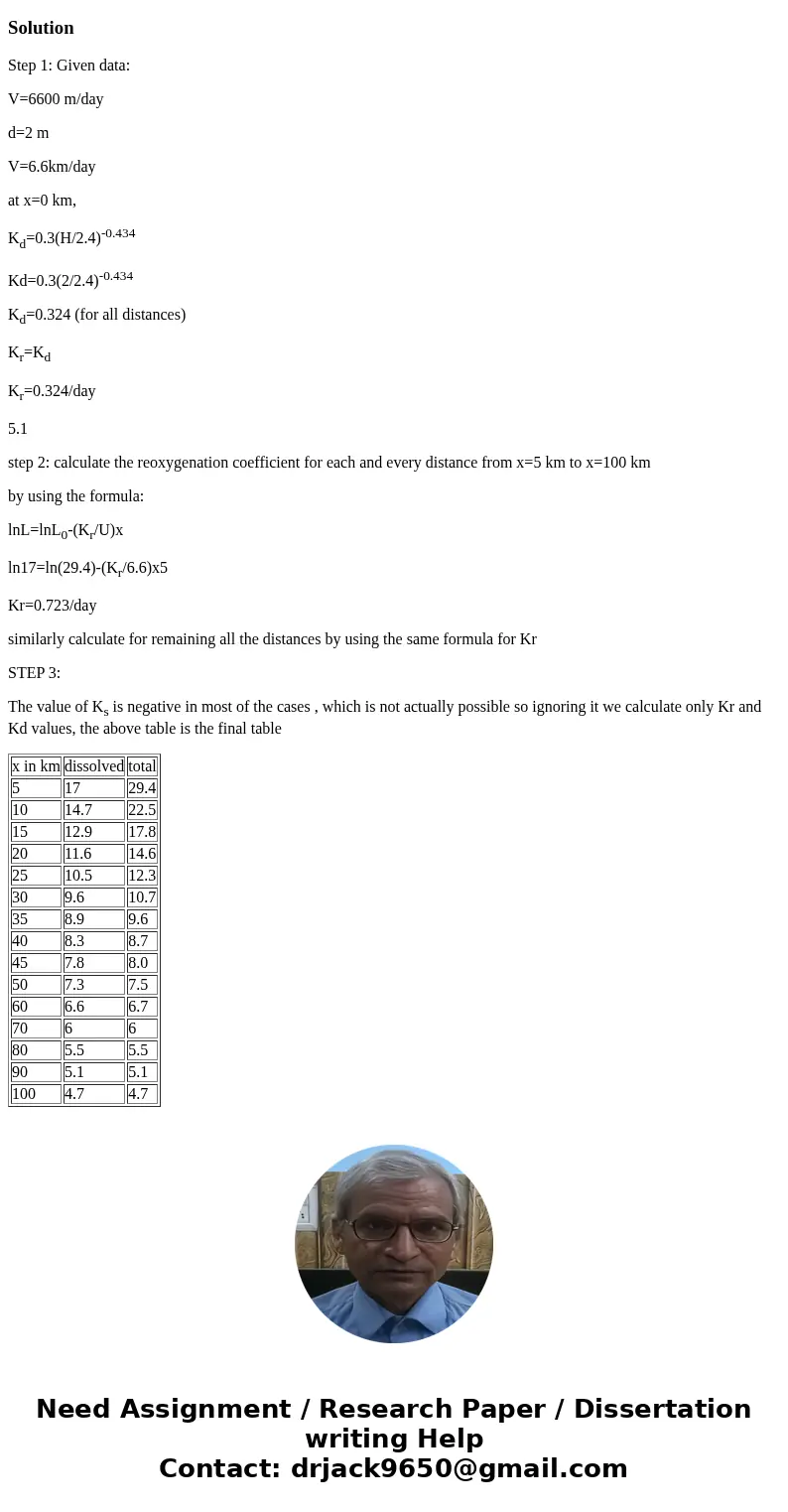The following data have been collected for dissolved and tot
The following data have been collected for dissolved and total BOD below a point source of untreated sewage into a stream. Use this data to estimate the BOD removal rates (kr,ks, andkd) for the river. The velocity and depth are 6600 m/d and 2 m, respectively.
The following data have been collected for dissolved and total BOD below a point source of untreated sewage into a stream. Use this data to estimate the BOD removal rates (k, k, and ka) for the river. The velocity and depth are 6600 m/d and 2 m, respectively x (km)0 5 1015 20 253035 Dissolved (m/L20 17 14.7 12.9 11.6 10.5 9.68.9 Total (mg/L) 40 29.4 22.5 17.8 14.6 12.3 10.7 9.6 x(km) | 40 | 45 | 50 | 60 | 70 | 80 | 90 | 100 Dissolved (mg/L) 8.3 7.87.3 6.6 6.0 5.5 5.1 4.7 Total (mg/L)8.78.07.56.7 6.05.5 5.14.Solution
Step 1: Given data:
V=6600 m/day
d=2 m
V=6.6km/day
at x=0 km,
Kd=0.3(H/2.4)-0.434
Kd=0.3(2/2.4)-0.434
Kd=0.324 (for all distances)
Kr=Kd
Kr=0.324/day
5.1
step 2: calculate the reoxygenation coefficient for each and every distance from x=5 km to x=100 km
by using the formula:
lnL=lnL0-(Kr/U)x
ln17=ln(29.4)-(Kr/6.6)x5
Kr=0.723/day
similarly calculate for remaining all the distances by using the same formula for Kr
STEP 3:
The value of Ks is negative in most of the cases , which is not actually possible so ignoring it we calculate only Kr and Kd values, the above table is the final table
| x in km | dissolved | total |
| 5 | 17 | 29.4 |
| 10 | 14.7 | 22.5 |
| 15 | 12.9 | 17.8 |
| 20 | 11.6 | 14.6 |
| 25 | 10.5 | 12.3 |
| 30 | 9.6 | 10.7 |
| 35 | 8.9 | 9.6 |
| 40 | 8.3 | 8.7 |
| 45 | 7.8 | 8.0 |
| 50 | 7.3 | 7.5 |
| 60 | 6.6 | 6.7 |
| 70 | 6 | 6 |
| 80 | 5.5 | 5.5 |
| 90 | 5.1 | 5.1 |
| 100 | 4.7 | 4.7 |


 Homework Sourse
Homework Sourse